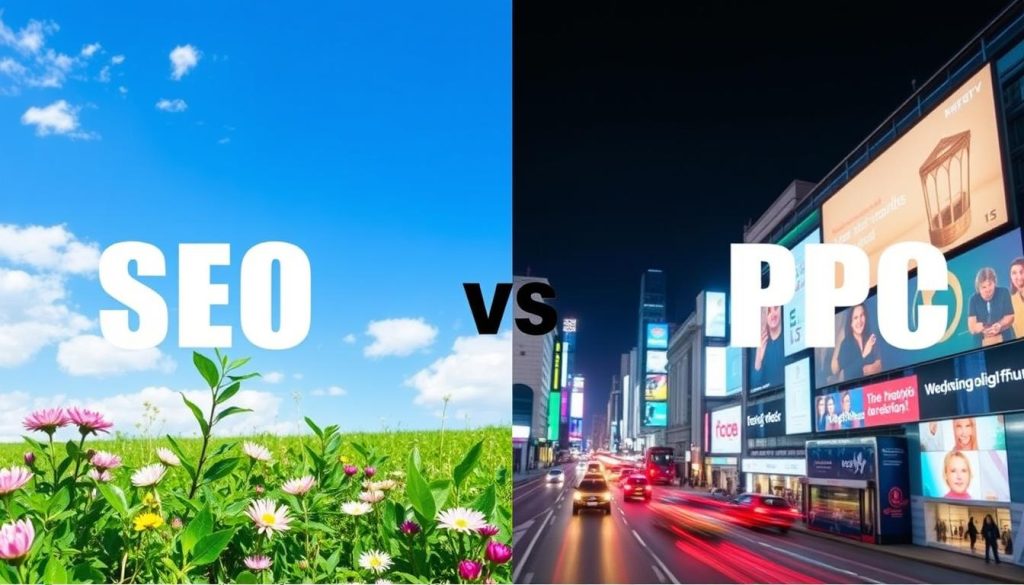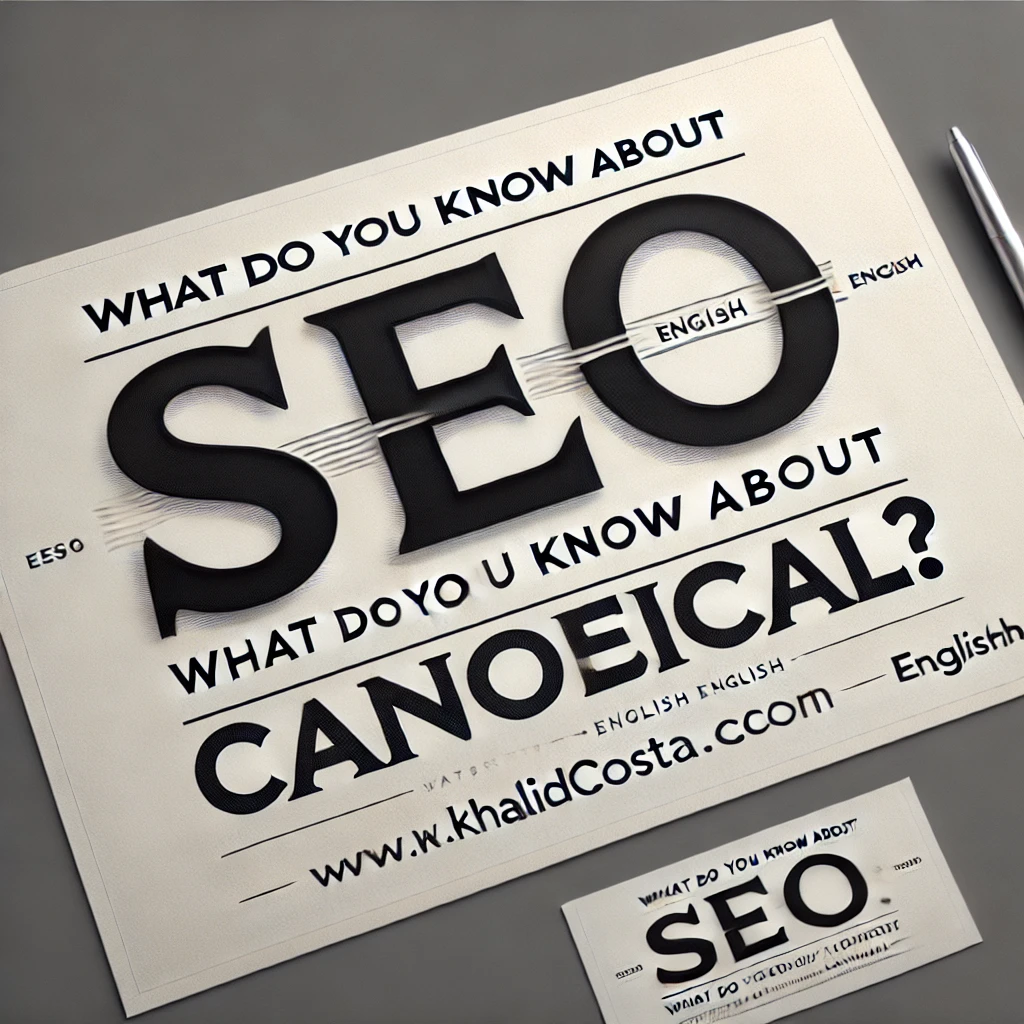في عام 2024، شهد عالم تحسين محركات البحث (SEO) تحديثات مهمة. هذه التغييرات تساعد في جعل نتائج البحث أكثر فائدة للمستخدمين. كمتخصصين في مجال السيو، يجب علينا فهم هذه التغييرات الجديدة.
سنستعرض أبرز تحديثات خوارزميات جوجل للسيو لعام 2024. سنناقش تأثيرها على ترتيب المواقع. كما سنركز على أهمية متابعة هذه التطورات الجديدة.

سنلقي نظرة على الأهداف الرئيسية التي تسعى جوجل لتحقيقها. هذه الأهداف تساعد في تحسين تجربة المستخدم. سنعرف كيف يمكن لنا مواكبة هذه التغييرات لضمان ظهور مواقعنا بشكل أفضل.
نظرة عامة على تحديثات خوارزميات جوجل للسيو 2024
في عام 2024، ستقدم جوجل تحديثات مهمة في خوارزمياتها. هذه التغييرات ستؤثر بشكل كبير على كيفية ظهور المواقع في نتائج البحث. ستحتاج المواقع إلى تحسين محركات البحث بشكل جديد.
تأثير التحديثات على ترتيب المواقع
الخوارزميات الجديدة ستضع التركيز على تجربة المستخدم والمحتوى الجيد. المواقع التي توفر محتوى مفيد وسهل الاستخدام ستحصل على الأولوية. المواقع التي لا تضع في اعتبارها تجربة المستخدم والمحتوى ستشهد تغييرات كبيرة.
أهمية مواكبة التغييرات الجديدة
من الضروري معرفة آخر تحديثات خوارزميات جوجل للسيو ما هي آخر تحديثات خوارزميات جوجل للسيو 2024. التغييرات ستبدأ تأثيرها على ترتيب المواقع. ستحتاج المواقع إلى إعادة النظر في استراتيجياتها لتكيف مع التغييرات الجديدة.
الأهداف الرئيسية للتحديثات
التحديثات الجديدة تهدف إلى تحسين تجربة المستخدم. تسعى جوجل لتقديم نتائج بحث أكثر ملاءمة. كما تريد تعزيز الثقة في نتائج البحث من خلال المحتوى الجيد والمصادر الموثوقة.

“إن التركيز على تحسين تجربة المستخدم والمحتوى ذي الجودة العالية سيكون محوريًا في التحديثات المقبلة لخوارزميات جوجل.”
تحديث تجربة المستخدم الأساسية
في عام 2024، أصبحت تجربة المستخدم الأساسية مهمة جدًا. هذه التحديثات تؤثر على ترتيب المواقع في نتائج البحث. يجب على مسؤولي المواقع الاهتمام بهذه العناصر.
أولًا، أصبحت سرعة تحميل الصفحات مهمة جدًا. يجب أن يتم تحميل الصفحات بسرعة لمنع إحباط المستخدم. هذا يؤثر على تصنيف المواقع.
ثانيًا، أصبحت سهولة التنقل ووصول المحتوى مهمة. المواقع التي تقدم تجربة مستخدم سلسة ستحظى بتفضيل أكبر.
أخيرًا، أصبح التوافق مع الأجهزة المحمولة ضروريًا. المواقع التي تعمل بشكل جيد على الهواتف والأجهزة اللوحية ستحظى بترتيب أفضل.
في النهاية، تؤكد هذه التحديثات على أهمية تحسين تجربة المستخدم. المواقع التي تلبي هذه المتطلبات ستحقق نتائج بحث أفضل.

“إن التركيز على تحسين تجربة المستخدم الأساسية هو المفتاح لتحقيق نتائج بحث أفضل في ظل التحديثات الجديدة لخوارزميات جوجل.”
خوارزمية الذكاء الاصطناعي الجديدة من جوجل
في عالم تحسين محركات البحث، أطلق جوجل مؤخرًا خوارزمية ذكاء اصطناعي جديدة. هذه الخوارزمية تهدف لتحسين نتائج البحث وتلبية احتياجات المستخدمين بدقة أكبر. الخوارزمية الجديدة لقوقل تستخدم الذكاء الاصطناعي في السيو لفهم المقاصد وراء طلبات البحث.
دور الذكاء الاصطناعي في تحسين نتائج البحث
الخوارزمية الجديدة تستخدم الذكاء الاصطناعي لفهم السياق والإشارات اللغوية. هذا يسمح لها بتقديم نتائج أكثر صلة للمستخدم. من خلال التعلم الآلي، تستطيع تحليل المحتوى وتحديد أولويات النتائج بدقة.
كيفية التكيف مع التقنيات الجديدة
- إنشاء محتوى ذو جودة عالية وذي صلة بالمستخدم
- تحسين تجربة المستخدم على الموقع
- الاستفادة من بيانات الذكاء الاصطناعي لتحليل الأداء والتحسين المستمر
- متابعة آخر تطورات الذكاء الاصطناعي في مجال السيو
باستخدام هذه الاستراتيجيات، يمكن للمسوقين والخبراء تحسين نتائج البحث. سيساعد ذلك في الاستفادة من الذكاء الاصطناعي وضمان نتائج فعالة.
تبني هذه التقنيات الجديدة مهم جدًا. سيساعد في تحسين تجربة البحث للمستخدمين وزيادة فعالية استراتيجيات تحسين محركات البحث.
تحسينات البحث المحلي وتأثيرها على الأعمال
مع تحديثات خوارزميات جوجل للعام 2024، أصبح التركيز على البحث المحلي أكثر أهمية. هذه التغييرات تؤثر مباشرة على ظهور الأعمال المحلية في نتائج البحث. لذلك، من الضروري لصاحبي الأعمال اتخاذ خطوات استباقية لضمان ظهور قوي في المحركات البحثية.
هناك نصائح مفيدة لتحسين ظهور الأعمال المحلية:
- تحسين وتحديث معلومات الأعمال على القوائم المحلية والدليل المحلي بجوجل.
- ضمان توافق الموقع الإلكتروني مع متطلبات البحث المحلي، مثل استخدام الكلمات المفتاحية المحلية.
- تحسين تجربة المستخدم على الأجهزة المحمولة لتلبية تفضيلات المستخدمين المحليين.
- إنشاء محتوى محلي ذو قيمة للمستخدمين في المنطقة.
- المشاركة في المجتمعات المحلية والتفاعل مع العملاء المحتملين.
| تقنية | تحديث خوارزمية جوجل | تأثير على الأعمال المحلية |
|---|---|---|
| تحسين البحث المحلي | التركيز على البيانات المحلية والجغرافية | زيادة الظهور في نتائج البحث المحلية، جذب عملاء محليين |
| الذكاء الاصطناعي | استخدام الآلات في تحليل البيانات المحلية | تحسين التوصيات والعروض المخصصة للعملاء المحليين |
| تحسين تجربة المستخدم | تفضيل المواقع ذات التجربة الجيدة على الأجهزة المحمولة | زيادة معدلات التحويل للأعمال المحلية |
استفادة من هذه التحديثات يمكن لأصحاب الأعمال المحلية تحسين ظهورهم في نتائج البحث المحلية. هذا يساعد في جذب عملاء جدد من المنطقة وتحسين معدلات التحويل والإيرادات.
تحديثات المحتوى والجودة E-E-A-T
في عالم التكنولوجيا، جوجل أعلنت عن تحديثات مهمة. هذه التغييرات تُعدل كيفية تقييم جودة المحتوى. الآن، يُقاس المحتوى حسب خبرة المؤلف، موثوقيته، سلطته، وثقافته.
معايير تقييم جودة المحتوى
لتحسين تصنيف جوجل، يجب أن يلبي المحتوى معايير معينة:
- الخبرة والموضوعية: المؤلف يجب أن يكون خبيرًا في الموضوع. يجب أن يظهر الموضوعية والحيادية.
- الموثوقية والدقة: المحتوى يجب أن يكون دقيقًا وموثوقًا. يجب استخدام مصادر حديثة وموثوقة.
- السلطة والجدارة بالثقة: المؤلف يجب أن يكون معروفًا بالسلطة والجدارة. هذا يزيد مصداقية المحتوى.
أهمية الخبرة والموثوقية
تحديثات جوجل للعام 2024 تبرز أهمية الخبرة والموثوقية. المستخدمون يبحثون عن محتوى موثوق وذو جودة عالية. هذا يدفع جوجل لترتيب المواقع بناءً على هذا المعيار.
لذلك، يجب على المسوقين التركيز على بناء سلطة المؤلف. يجب تقديم محتوى ذو جودة عالية وموثوق.
في الخلاصة، تحديثات E-E-A-T مهمة جدًا للمسوقين. يجب مراعاتها لتحسين ترتيب المواقع في نتائج البحث بحلول 2024.
تغييرات في تقييم الروابط الخلفية
في عالم تحديثات خوارزميات جوجل للسيو 2024، تغيرت كيفية تقييم الروابط الخلفية. لم تعد الكمية مهمة فقط، بل الجودة والفائدة أيضًا. هذا يحتاج المسوقين لإعادة نظر في استراتيجياتهم لبناء روابط قوية.
الروابط الخلفية أصبحت أكثر تعقيدًا. جوجل الآن تأخذ في الاعتبار سياق الرابط ومصداقية الموقع المصدر. يجب على المسوقين التركيز على محتوى أصيل وذات جودة عالية.
بناء روابط خلفية قوية ومفيدة
هناك استراتيجيات لإنشاء روابط خلفية مؤثرة:
- إنشاء محتوى قيم ومميز لجذب الروابط العضوية من مواقع موثوقة.
- المشاركة والتفاعل في المجتمعات المتخصصة، وبناء علاقات مع المؤثرين.
- التركيز على الروابط الطبيعية ذات صلة بمحتوى الموقع، بدلاً من ممارسات سيئة.
الاستثمار في جودة المحتوى والعلاقات الصحية مع المواقع هو المفتاح. هذا سيبني حضورًا قويًا على محركات البحث في تحديثات خوارزميات جوجل للسيو 2024.
| العامل | التأثير على تقييم الروابط الخلفية |
|---|---|
| سياق الرابط | الروابط ذات الصلة الوثيقة بالمحتوى تُفضَّل |
| مصداقية الموقع المصدر | الروابط من مواقع موثوقة تُعطى أهمية أكبر |
| ملاءمة المحتوى | الروابط التي تُحسن تجربة المستخدم تُفضَّل |
فهم هذه المتطلبات الجديدة سيساعد المسوقين على بناء حضور قوي. هذا سيحدث في ظل تحديثات خوارزميات جوجل للسيو 2024.
تحديثات تحسين تجربة الموبايل
في عالم التكنولوجيا المتطور، جوجل تضع اهتمامها بتحسين تجربة المستخدمين على الهواتف. هذه التحديثات تساعد على جعل المواقع أكثر ملاءمة للهواتف الذكية. كما تساعد في تقليل وقت التحميل.
متطلبات التوافق مع الأجهزة المحمولة
لتحقيق النجاح مع الخورازمية الجديدة لقوقل، المواقع الإلكترونية تحتاج إلى الالتزام ببعض المعايير. هذه المعايير تشمل:
- تصميم موقع مُحسَّن للهواتف الذكية وسهل الاستخدام
- تنظيم المحتوى بطريقة متجاوبة مع شاشات الأجهزة المحمولة
- استخدام تنسيقات وسائط متعددة مناسبة للشاشات الصغيرة
- تجنب استخدام عناصر تعيق التصفح على الهواتف الذكية
سرعة تحميل الصفحات على الموبايل
سرعة تحميل الصفحات مهمة جدًا لتجربة الموبايل. مالكي المواقع يجب عليهم:
- تحسين حجم الصور والملفات المضمنة في الصفحات
- استخدام تقنيات التحميل السريع مثل AMP أو PWA
- الحد من استخدام الملفات الثقيلة كالفيديو والجافا سكريبت
- تحسين بنية الموقع وترميز الصفحات لزيادة سرعة التحميل
بتبع هذه النصائح، المواقع الإلكترونية ستستفيد من آخر تحديثات جوجل. هذا سيحسن تصنيفها في نتائج البحث.
تأثير التحديثات على المواقع متعددة اللغات
مع التغييرات المستمرة في خوارزميات جوجل للسيو 2024، أصبحت المواقع متعددة اللغات مهمة جدًا. هذه المواقع تواجه تحديات لضمان ظهورها بشكل متميز في نتائج البحث. يجب أن تكون متميزة لكل لغة.
أحد التحديثات الجديدة هو التركيز على تجربة المستخدم. جوجل ستفضل المواقع التي توفر تجربة ممتازة للمستخدمين، بغض النظر عن اللغة. من المهم جدًا التأكد من أن المحتوى والتنقل والواجهة البصرية مصممة بعناية لكل لغة.
جوجل أيضًا تضع أهمية كبيرة لـ الخبرة والموثوقية والسلطة والملاءمة (E-E-A-T) عند تقييم المحتوى. يجب على أصحاب المواقع متعددة اللغات التأكد من أن محتواهم يلبي هذه المعايير في كل لغة.
| معيار | وصف | نصيحة للمواقع متعددة اللغات |
|---|---|---|
| الخبرة | المعرفة والخلفية المتعلقة بالمحتوى | التأكد من أن الفريق المسؤول عن المحتوى لديه خلفية مناسبة في كل لغة |
| الموثوقية | مدى موثوقية المصادر والمعلومات | استخدام مصادر موثوقة ومناسبة لكل لغة |
| السلطة | مدى سلطة المصدر وخبرته | تعزيز سلطة المحتوى عبر الروابط الخلفية والاعتماد على خبراء في كل لغة |
| الملاءمة | مدى ملاءمة المحتوى لاحتياجات المستخدم | التأكد من ملاءمة المحتوى لجمهور كل لغة على حدة |
بإتباع هذه الإرشادات، يمكن للمواقع متعددة اللغات تحسين أدائها في نتائج البحث. ستحقق تجربة ممتازة للمستخدمين الناطقين بمختلف اللغات.
استراتيجيات التكيف مع الخوارزميات الجديدة
مع تطور خوارزميات البحث، أصبح من الضروري معرفة آخر تحديثات ما هي آخر تحديثات خوارزميات جوجل للسيو 2024. مسوقي المحتوى والمواقع الإلكترونية يجب أن يكونوا على دراية بذلك. هذا يساعد في تحسين أداء مواقعهم وترتيبها على محركات البحث.
سنستعرض خطوات أساسية وأدوات مفيدة. هذه الأدوات تساعدك في التكيف مع التغييرات الجديدة في hgo.
خطوات تحسين الموقع
- تحسين محتوى الموقع: تأكد من جودة المحتوى وفقاً لمعايير محركات البحث.
- تحسين تجربة المستخدم: عمل على تحسين سرعة الموقع وسهولة الاستخدام.
- تعزيز الروابط الداخلية والخارجية: بناء شبكة روابط موثوقة.
- تحسين الأمان والخصوصية: حماية موقعك وبيانات المستخدمين.
- مراقبة وتحليل البيانات: استخدم أدوات التحليل لتحسين أداء الموقع.
أدوات مراقبة الأداء
للمتابعة أداء موقعك، هناك أدوات مفيدة. مثل:
- Google Search Console: لمتابعة ظهور الموقع في نتائج البحث.
- Google Analytics: لتتبع حركة المرور على الموقع.
- أدوات قياس سرعة التحميل: للتأكد من سرعة الموقع على جميع الأجهزة.
- أدوات تحليل الروابط: لتقييم جودة الروابط.
باستخدام هذه الاستراتيجيات والأدوات، ستكون قادرًا على التكيف مع آخر تحديثات خوارزميات البحث. هذا يساعد في تحسين ترتيب موقعك على محركات البحث.
“النجاح في عالم SEO يتطلب المرونة والقدرة على التكيف باستمرار مع التغييرات الجديدة.”
تحديثات الأمان وحماية المستخدم
في عام 2024، ستتوجه جوجل نحو تحسين أمان المواقع الإلكترونية. ستعمل على حماية بيانات المستخدمين. هذا سيجعل المواقع أكثر أماناً وثقة، مما يرفع من ترتيبها في نتائج البحث.
الجوانب الرئيسية تتضمن حماية البيانات الشخصية للمستخدمين. ستتطلب المواقع الامتثال لممارسات أمان أفضل. هذا يشمل استخدام بروتوكول HTTPS والحماية من الهجمات الإلكترونية.
سيتم أيضاً مراقبة جودة المحتوى. ستتم التأكد من أنه لا يحتوي على محتوى ضار أو خادع. هذه الخطوات ستزيد ثقة المستخدمين وتحسن تجربتهم. الامتثال لهذه المتطلبات سيحسن من ترتيب المواقع في نتائج البحث لعام 2024.













